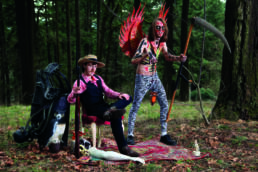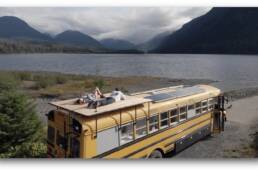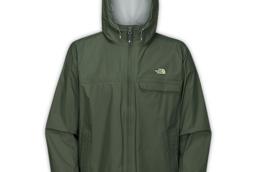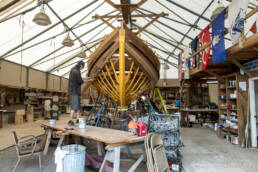A ferocious carnivore and old-growth forager, the fisher has been over-trapped and its habitat nearly wiped out. But in Washington State’s Cascade and Olympic Ranges, thanks to vital government and NGO co-operation, this delightfully wicked weasel is returning. By Dave Quinn.
Few lucky souls have had the good fortune of glimpsing the wily fisher, a house-cat-sized carnivore with the attitude of its larger weasel relative, the wolverine. Fishers were once abundant in old-growth forests across the continent, where they preyed on squirrels, hares, birds, and porcupines. Yes, porcupines.
These badass carnivores love porcupines so much that they were transplanted (unsuccessfully) into the Khutzeymateen Valley north of Prince Rupert, British Columbia, in 1985 to try to control porcupine damage to replanted clear-cuts. For their dens, fishers also require large, cavity-filled old-growth trees, which are nearly non-existent across much of their range after a century of industrial forestry. Even if they can find suitable habitat, females do not reproduce annually, making them very susceptible to over-trapping.
Fishers have few, if any, natural predators. Except for humans.
In Washington’s Pacific Northwest, however, large old-growth patches are protected, and it is illegal to trap wild animals, except by permit to deal with problem animals. Biologists are hoping this will result in good outcomes for fishers recently reintroduced to the North Cascades region, where they have been missing since the mid-1900s. “After great success in protecting the region’s old-growth forest habitat, we turned our attention to rewilding the landscape,” explains Dave Werntz, science and conservation director for Bellingham-based wilderness advocacy group Conservation Northwest. “In the early 2000s, we brought the idea of reintroducing fisher to the Washington Department of Fish and Wildlife. They were supportive.”
Fishers eat porcupines, flipping over the prickly prey to tear open the soft underbelly.
After a feasibility assessment identified quality habitat in the Olympic and Cascade ranges, the first group of 90 fishers arrived in Washington from British Columbia in 2008. Last winter, 26 fishers were relocated from northern Alberta into the Skagit and Suiattle watersheds. This winter, another 54 fishers will join them. “The project works to right a wrong, fix an injustice, and increase ecological resilience of Washington’s forest habitat by restoring its biological diversity,” says Werntz. “It also represents a productive collaboration among state and federal agencies and NGOs.”
The name “fisher” has nothing to do with fish. It is thought to be an echo of the old European term fiche or fitch for the European polecat, a far-flung relative also coveted for its luxurious fur.
Fishers were abundant until the late 19th century, when pressure from intensive trapping eradicated the animal from a large portion of its range. It also nearly wiped out beavers across the continent. Fishers’ strong weasel instinct to forage, to relentlessly investigate every funky scent as a potential source of food, turned the curious animal into trap fodder. Their populations in entire regions, like the East Kootenay of British Columbia and the whole of the Pacific Northwest, fell to leg-hold and Conibear traps set to claim their luxurious winter fur coats. British Columbia tried to protect fishers by “closing” the fisher trapping season in the winters of 1993 and 1994. But, really, there is no way to trap other species, like marten, fox, or ermine and not kill fishers. If traps are set, fishers will be caught. During the two-year closure for fisher trapping, 302 fishers were reported as “accidentally” trapped in the province.
Fisher pregnancies last 51 weeks.
Widespread loss of older forests, along with increased access for trappers into what little wilderness remains, has increased pressure on all furbearers in recent decades, but habitat protection, modern trapping laws, and the work of reintroducing a species spells hope for the future of fishers in the North Cascades and helps ensure one more piece of the coastal ecological puzzle slots back into place.
Related Stories
Saving The Salish Sea in the Pacific Northwest
Two National Geographic photographers and marine biologists are trying to get the Salish Sea, which includes the Strait…
Who’s The Best Band in the Pacific Northwest Heavy-Metal Scene?
Born from record bins, basements and Cascadia’s blue-collared past, the Pacific Northwest heavy-metal scene has torn a…
Is This The Coolest School Bus In The Pacific Northwest?
Louisa Gilbert of Wild Bus Films has turned a simple yellow school bus into an off-grid travelling palace. This is…
Of Vessels & Veritas At The Northwest School of Wooden Boatbuilding
The teachers at this esteemed Olympic Peninsula institution know that while owning a boat will change your life,…
No Boat? Try the Pacific Northwest’s Only Cable-Tow Wakeboard Park
A former X Games wakeboarder knows most of his compatriots can't afford the boat load of cash needed to ride rails and…








